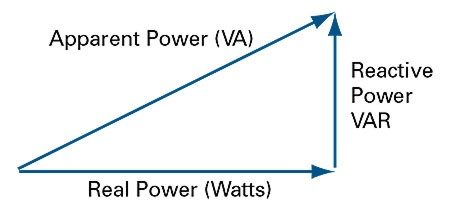Mathematically, real power (watts) is related to apparent power (VA) using a numerical ratio referred to as the power factor (PF) , which is expressed in decimal format and always carries a value between 0 and 1.0. For many newer types of IT equipment, such as computer servers , the typical PF is 0.9 or greater . For legacy personal computers (PCs), this value can be 0.60 – 0.75.
 VA-watts-graph.jpg
VA-watts-graph.jpg
